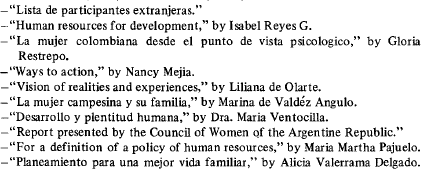No CrossRef data available.
Article contents
An Analysis of the Consejo Nacional de Mujeres del Peru
Published online by Cambridge University Press: 02 January 2018
Extract
It has been noted (Tanner, 1970: 23) that
a woman growing up under American ideas of liberty in government and religion, having never blushed behind a Turkish mask, nor pressed her feet in Chinese shoes, can not brook any disabilities based on sex alone, without a deep feeling of antagonism with the power that creates it.
And so it is in analyzing the women's movement in Latin America that one cannot tolerate any “disabilities” of women on the basis of sex, without a deep feeling of antagonism with the culture which creates them.
As de observes, “Latin countries… keep women in subjection less by the rigor of the laws than by the severity of custom.” Upon examination, one finds that Latin American culture is by nature deeply rooted in sexism and male chauvinism and is maintained by institutions such as the church and the patriarchal governments.
- Type
- Research Article
- Information
- Journal of Interamerican Studies and World Affairs , Volume 17 , Issue 4: Special Issue: The Changing Role of Women in Latin America , November 1975 , pp. 426 - 438
- Copyright
- Copyright © University of Miami 1975
References
 Google Scholar
Google Scholar



